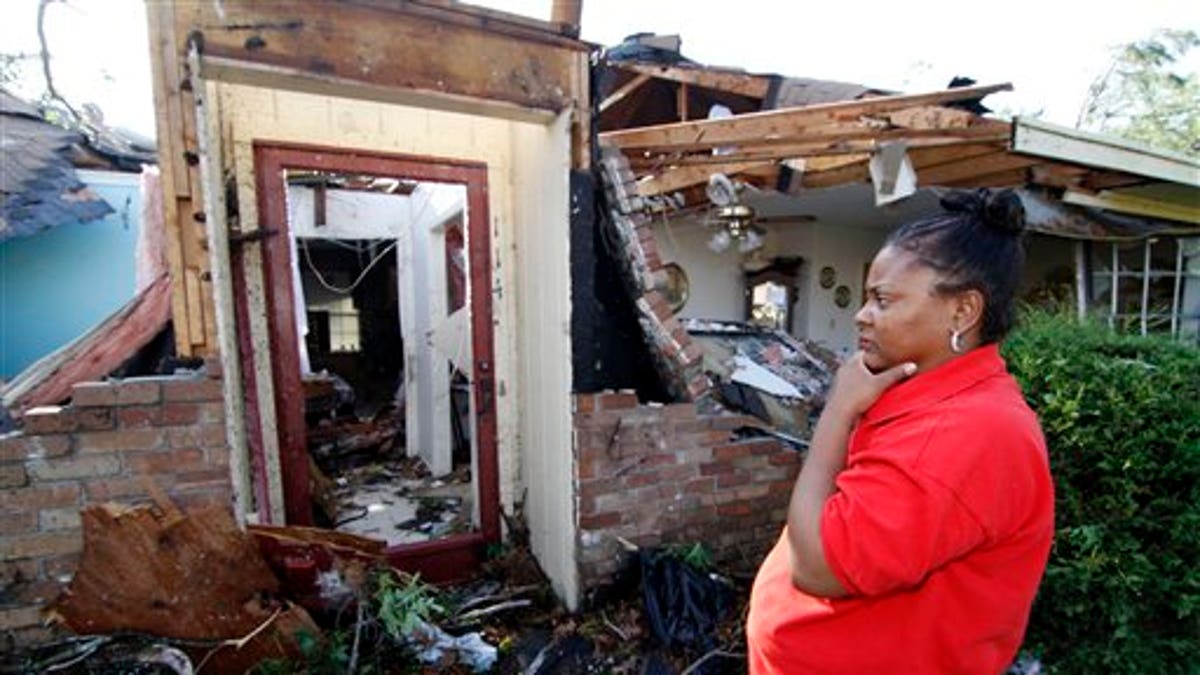
(AP2011)
With nearly 250 people confirmed dead in one of the worst natural disasters since Hurricane Katrina, why didn’t the nation's early-warning system provide an early warning?
It did.
The National Oceanic and Atmospheric Association gave half an hour warning that super tornadoes were coming, and meteorologists at the National Weather Service saw severe weather coming as much as six days in advance, said Greg Carbin, lead meteorologist with NOAA's Storm Prediction Center.
"These violent events are relatively well predictable in this era," Carbin told FoxNews.com. It wasn't always so. Tornado warnings used to come out as much as 15 minutes after they formed, relying primarily on eyes on the ground to confirm their existence.
That old system -- or lack of one -- may explain the 315 lives lost when a similar super-outbreak struck in 1974. Since then, the National Severe Storm's Laboratory (NSSL) has developed an early warning system widely credited with saving countless lives.
"It's quite possible the death toll could have been much, much higher if you had placed this event back 30 years ago," Carbin said. "That era still had warnings, but the system and information dissemination was far more primitive than it is today."
How we predict tornadoes today
Tornadoes are rare events caused by specific atmospheric conditions. So how do scientists know a storm is brewing?
"The first indication comes from an awareness that you're in April," Carbin said. Much of the agency's predictive capabilities are based on historical data, which tells scientists in a broad sense how the atmosphere behaves at certain times of the year.
By seeking out specific patterns of weather that replicate the historical conditions that have preceded tornadoes, meteorologists discovered well in advance something was due.
"We started highlighting the potential for this historic outbreak six days ahead of what happened yesterday," Carbin told FoxNews.com. Pattern recognition is crucial, a way to comb through the firehose of data collected today from numerous sources.
"Surface observation, radar data, satellite, airplanes, balloons that are launched twice daily all around the world that take measures of the atmosphere vertically as the balloons go up 100,000 feet and burst -- all those are plugged into the equations of motion -- the physics that describes fluid motion," he said
And that's where the complexity comes in, Carbin explained.
"Anyone aware of fluid dynamics knows it's incredibly tough to get your brain around," he said. How to solve that challenge? Computers, of course.
"You do it by throwing a massive amount of computing capability at the problem," Carbin told FoxNews.com. The NSSL has some of the fastest supercomputers in the world -- among the top 20 on the planet -- which is necessary to analyze all that data.
How to get the word out?
As an event approaches, the NSSL's certainty that something will occur increases. But unlike the National Hurricane Service -- which knows as much as 24 hours ahead of time that a hurricane is on the way -- the NWS can't say with certainty that a twister is due.
"At 10 a.m. or so, we thought holy smokes, Mississippi and Alabama are staring down the barrel of a gun," Carbin said. At that point, the agency sent out an alert -- not a watch, not a warning -- that something might be coming down the line. It usually puts tornado watches out 4 to 6 hours ahead, and particularly dangerous storm (PDS) warnings 2 to 4 hours ahead.
"That's the time for people to think, where am I going to go?" Carbin said. The agency may never advise as soon as the Hurricane Service, however.
"I don’t think we'll ever get to the point where we're doing that; it's just completely a different atmospheric animal," Carbin said.
Did the warning system fail?
Unfortunately, it often takes seeing a video of a twister on the TV to scare people, who simply don't realize the danger of tornadoes -- despite the recent rash, they're actually quite rare. It takes a fine-tuned set of ingredients in the atmosphere for a tornado to form and persist, Carbin told FoxNews.com.
"People just don't experience this kind of weather on a regular enough basis to realize, 'I'm in danger here.' That inexperience plays into why we see this," he said.
And by the time a video is processed and up on the television, there's little time to race for cover.
"There's very little you can do once a violent tornado is on the ground and headed in your direction other than try to get out of the way or underground -- and sometimes there's no place to hide from that," he said.
